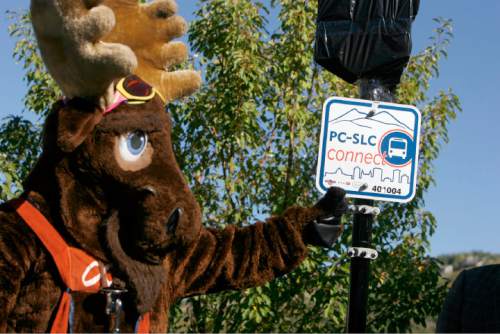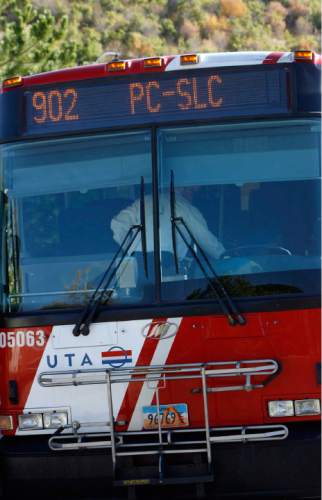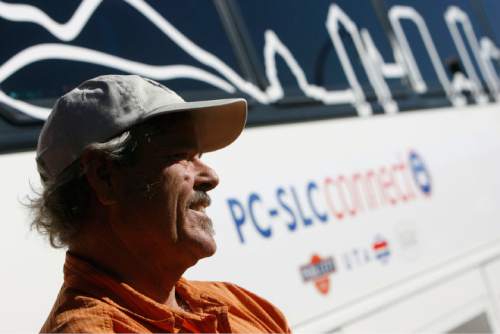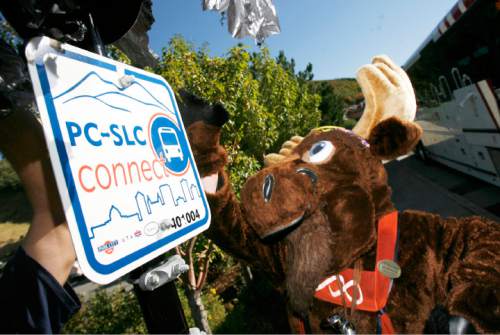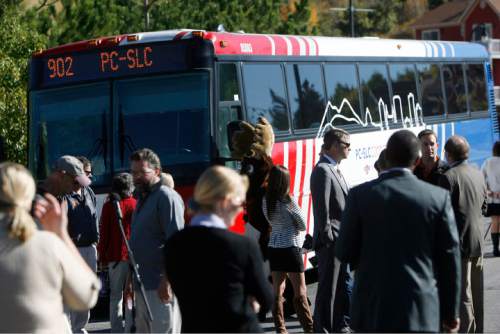This is an archived article that was published on sltrib.com in 2016, and information in the article may be outdated. It is provided only for personal research purposes and may not be reprinted.
After four years of operation, the Salt Lake City to Park City transit bus service has increased ridership by 45 percent — and managed to reduce operating costs by 20 percent.
"It's something that is important to both regions, the Wasatch Front and the Wasatch Back. And we expect it to grow," Interim Utah Transit Authority CEO said Wednesday.
The joint service operated by the UTA in partnership with Park City and Summit County began service in August 2011.
Ridership grew from about 33,000 in its first full year of operation to about 48,000 in 2015, Lorin Simpson, UTA regional manager for buses in Salt Lake County, told a UTA Board subcommittee.
"After operating it for a year, we got together and modified what was working and what wasn't. We modified the service a little bit, changed the time points, the frequencies, modified the fares, did some marketing," he said.
One key change was lowering fares.
Initially, a one-way fare cost $5.50. Now it is $4.50 (and monthly passes cost $162). UTA previously said the price cut helped quickly increase ridership by about 1,000 riders a month, even though it cut the number of daily trips offered at the same time.
UTA also has operated a pilot program with the University of Utah to offer low-cost passes for students from Summit County that helped increase ridership, Benson said, and is in discussions with Westminster College to possibly do the same.
To cut costs, Simpson said, "We eliminated some trips that just weren't beneficial and were not producing ridership. During the summer, there isn't quite the demand, so we modified the service. That's where the majority of reduction in costs came."
For example, UTA initially offered 14 daily trips on weekdays, but reduced that to 10 — and it offers six daily trips on weekends.
Lower fuel costs recently also have helped to cut costs, but Simpson said those savings are minor compared to what was realized from more closely matching service offered to demand.
The Park City to Salt Lake City line is used mostly by commuters going to work, Benson said, with skiers accounting for a minor part of ridership.
About half the travelers from Salt Lake City ride as far as a business park at Kimball junction, and the other half continues to jobs at ski resorts. Benson said many Park City residents travel to the University of Utah, or jobs in the valley.
Park City buses have on-time records comparable to other UTA buses and trains, even though they operate in Parleys Canyon, which can be treacherous during winter.
"These buses can go in very inclement weather," Benson said. Unlike ski buses that can automatically deploy tire chains when needed, the Park City buses require them to be attached manually — but Simpson said UTA is experimenting with an automatic deployment system for them.
"This is a unique service for us because it goes outside our service district" and partners with Park City and Summit County, which offer their own separate transit service, Benson said.


